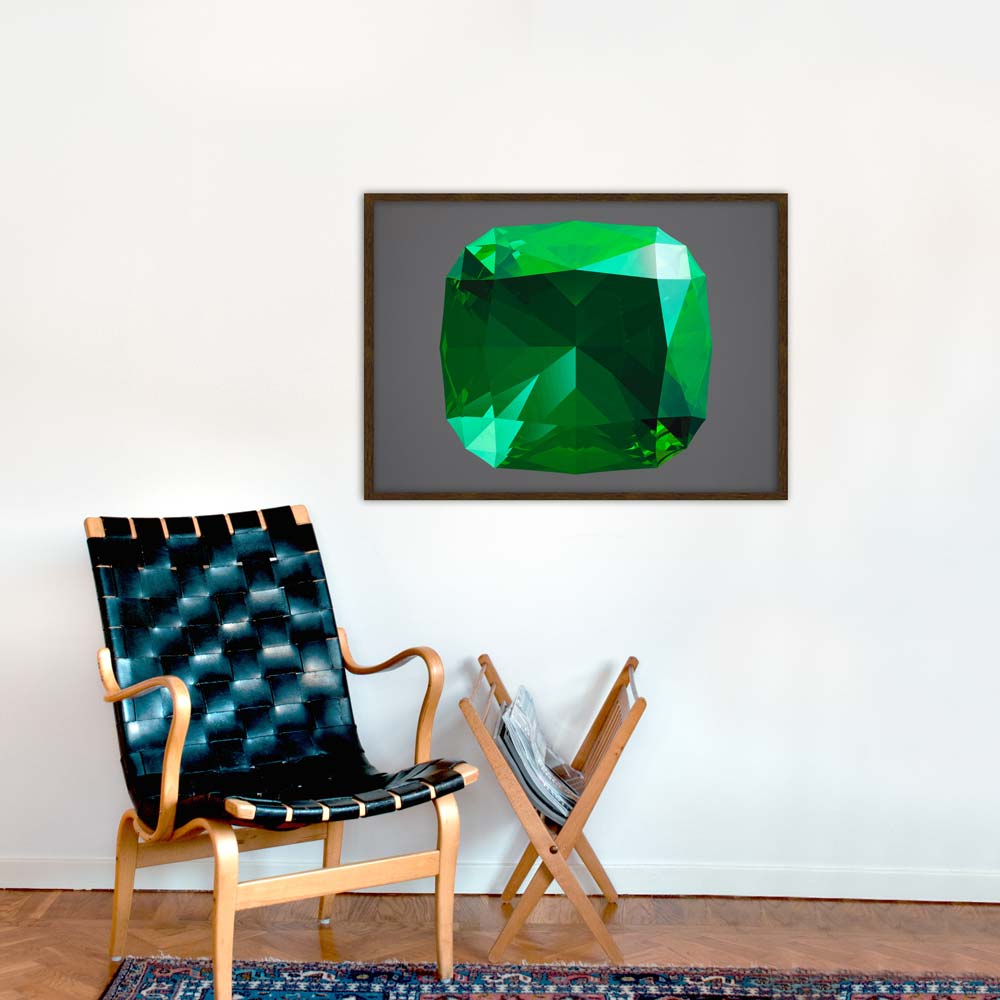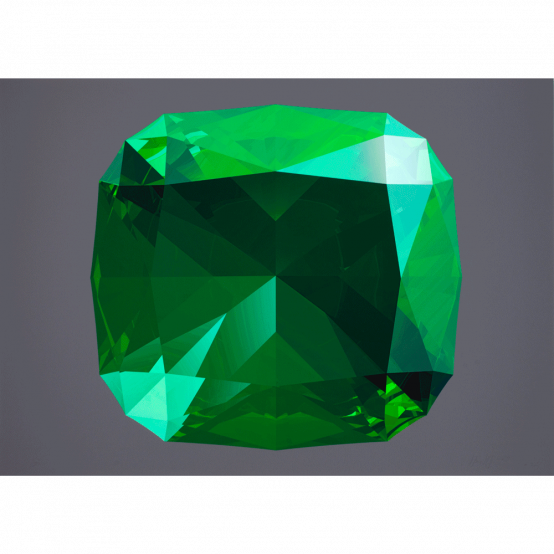emerald
ed. art proudly presents a new print by Charlotte Gyllenhammar: Smaragd (Emerald). Just as in the work Rubin (Ruby) from 2017, Gyllenhammar examines the gem in close-up. The individual gemstone is displayed, parallel to the image surface. Facets and light refractions reflect the emerald's multifacetedness with crystalline sharpness.
The emerald represents fertility and rebirth as in spring green, but also fidelity and memory. It may be the most mythical of all gemstones. It was the favorite gemstone of the Egyptian regent Cleopatra. The Greek philosopher Hermes Trismegistus' Smaragdine Tablet, outlines how to make the Philosopher’s Stone; the substance that the alchemists used to convert base metals such as lead into gold. These are allegories for the development of human consciousness, from unconscious – lead – to conscious – gold. The Smaragdine Tablet talks of the ultimate goal of the hermetic teachings – to transform and raise one’s consciousness into gold; that is, reaching illumination.
The emerald has a different structure from both ruby, sapphire and diamond, a hexagonal structure, with small inclusions, making it considerably more fragile. Therefore, it has its own cut with blunted corners; called emerald cut. In the work Smaragd we see a cushion cut. It has 16 corners, twice as many as the octagon.
Together Rubin and Smaragd make up a couple. One red and one green stone. Like two lanterns on a nightly sea, red for port and green for starboard. They form a whole as opposites in the colour wheel.
Charlotte Gyllenhammar is fascinated by the gem as both symbol, concrete matter and value. Since the 90's, Gyllenhammar has used precious metals and stones in both sculpture and film. In the work Olydnad (Disobedience), 1997, there is a small silver vat embossed with red grenades. In Boy, Girl from 1999, the boy carries a kind of attribute, a sphere in silver infused with yellow sapphires, which is sculpture and jewelry at the same time.
The gemstone is the most compressed of material, the oldest and hardest of all earthly matter. Precious stones are formed by compressed coal. According to Gyllenhammar, they form a kind of concentrate of time, formed during a geological and unimaginable period. They are closed and transparent at the same time.




